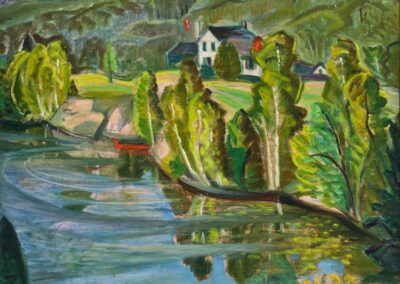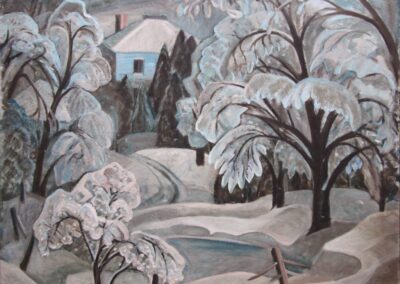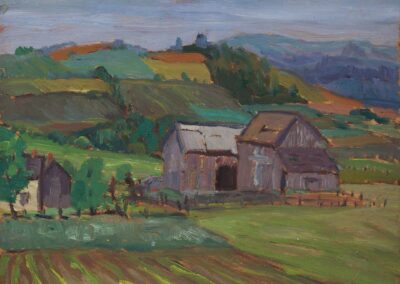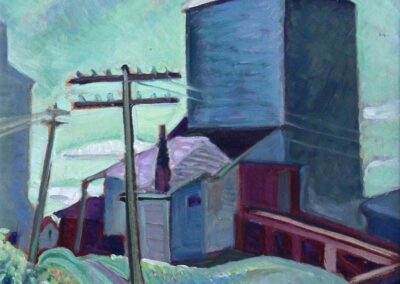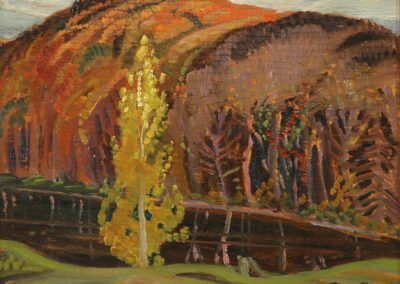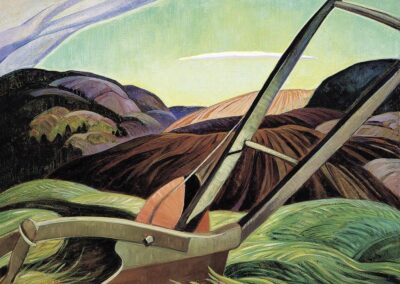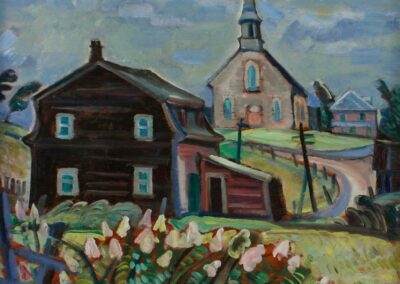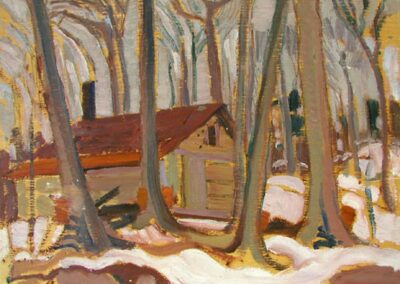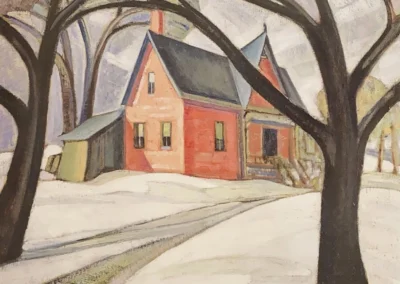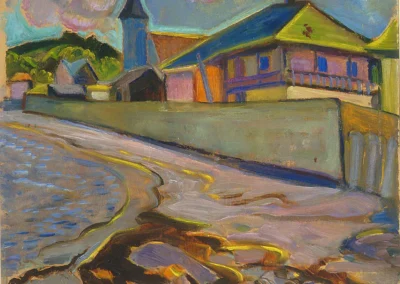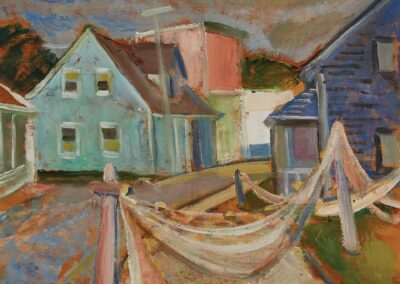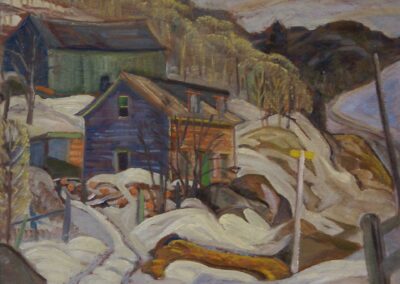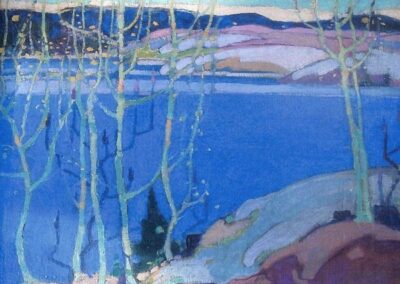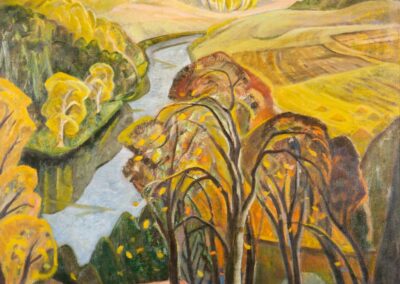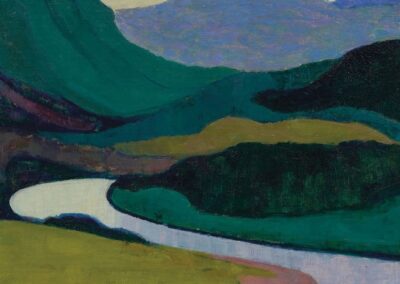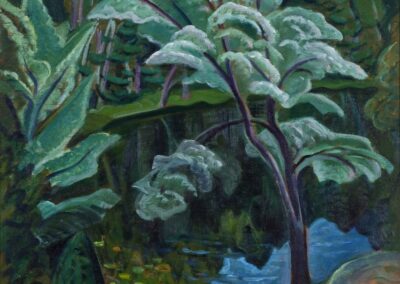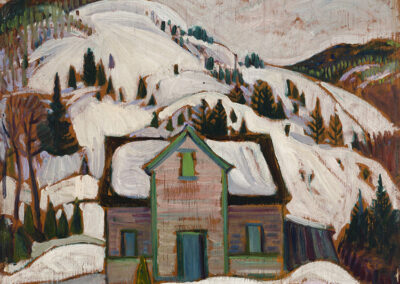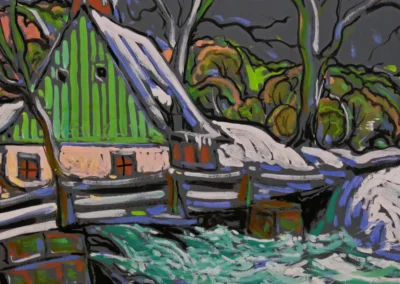Our next Artist You Need To Know is Anne Savage (1896 – 1971).
Savage was a founding member of the Canadian Group of Painters : she was among the first generation of Canadian Modernist painters as well as an art educator who was instrumental in shaping the work of future generations. The majority of her painted scenes depicted her immediate world, in a manner that blended traditional landscape painting with the ideas of impressionism and other art movements from her epoch.
She was a trailblazer in being among the first women to play a pivotal role in defining Canadian painting, as well as advocating for the essential importance of the visual arts in teaching (especially with younger students, as an integral part of early childhood education). Many art historians see a parallel between her role as a teacher and her development as an artist.
From the Art Canada Institute : “Savage held a romantic view of the natural landscape as a defining aspect of Canadian national identity.”
Annie Douglas Savage was born in Montréal : she grew up in Dorval, in Quebec, which was at that time a prominently rural area and spent many a summer at a cottage in the Laurentian mountains which surely influenced her interest in the Canadian landscape. Savage was a student at the Art Association of Montréal from 1914 – 1915 : notable instructors included William Brymner and Maurice Cullen. Her fairly happy and placid family life was irrevocably changed with the death of twin brother, who perished in the First World War. This would influence her career choices as instead of trying her hand as a professional artist she chose to have teaching as her primary career to help support her family. Savage would also have a short period of working as a medical artist in both Montréal and Toronto.
Post WW I, Savage would study at the Minneapolis School of Art in Minnesota : returning to Montréal afterwards, she started teaching – specifically in art – at the Baron Byng High School. She would be a mainstay of that school for nearly three decades. Simultaneously, Savage also taught children’s art courses and was instrumental in the formation of the Child Art Council of Quebec and the High School Art Teachers’ Association.
Her artistic career truly began to take shape when, in 1921, she joined the Beaver Hall Group. This group was important for gender equity in its membership, and included several significant female painters of that era, including previous Artist You Need To Know Prudence Heward, Mabel May and Nora Collyer. A brief period at the Ontario College of Art – where she encountered the artist Arthur Lismer – led to Savage visiting Europe to further expand her horizons and consequently integrate them into her own practice.
The Canadian Group of Painters (CGP) – of which Savage was one of the founding members – was formed in 1933. The group “began as a collective of twenty-eight artists from across Canada. Formed in 1933 as a direct outgrowth of the Group of Seven, the CGP was the first group to aspire to cross-country representation of modern artists. The group was intentionally diverse; it included women, who made up almost one-third of the membership. CGP exhibitions travelled across Canada and the US, often raising debate and controversy on the state of art and culture in Canada. The subject matter had great variety, and included figurative works, landscapes, abstraction, and realism. What made the group such a vital force was its engagement with modern life—in subject matter, artistic approach and social activity—against the background of the Depression, World War II and postwar reconstruction.” (from here) A number of previously featured Artists You Need To Know intersected with the CGP’s membership, including Paraskeva Clark and Prudence Heward. Other notable members include Jack Bush, Bertram Brooker and A. J. Casson.
Savage was an integral force in that often disparate collective. She would be president of the group twice over her long association with them (1949 and 1960, respectively).
Later in her life – after retiring from her primary teaching job – Savage assumed the role of Supervisor of Art for the Protestant School Board of Greater Montreal. She would also teach at McGill University for five years (1954 -1959).
Throughout her life, Anne Savage was a vocal advocate for gender inequity and made this a mainstay of both her artistic and educational worlds : she was an active member of the League for Women’s Rights, Montreal’s suffrage organization.
“The part of the country which is my real locale is a little lake in the Laurentians… this beautiful little lake. A very deep, clear, cold water… And the country around this puddle was very undulating. It seemed to have little hills, and little ravines so that, without going for more than a very short distance, you could sit down, turn your back and you would have a complete new composition.”
Anne Savage passed away in Montreal in 1971 : she is interred in the Mount Royal Cemetery in that city. Her archives – papers and other artist ephemera – were bequeathed to Concordia University.
From the Ellen Gallery, in tandem with a revisiting of her art and life in a more contemporary context: “Her work as a teacher, her frequent exhibitions, sales of artworks and membership in important art associations (Beaver Hall Group, Canadian Group of Painters, Art Association of Montréal) firmly counter the prevailing image of a well-bred young lady from Montreal who, for her own pleasure, translated into brushstrokes the beauty of the Québec countryside.”
More about her life, artwork and legacy in terms of both Canadian art and the groundwork she laid for future generations of Canadian women artists can be seen here, here and here.

